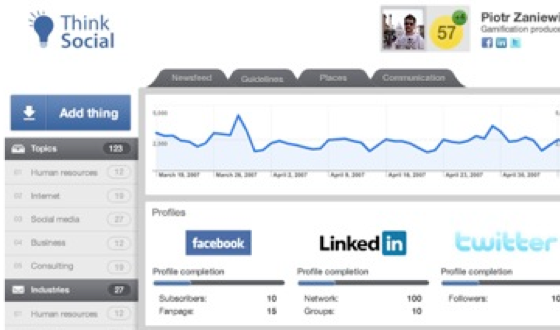People often ask me: how is it possible to sell anything before actually building it? After some explanations more doubts arise: that can't be possible with more complicated products. It's easy to sell e-book pre orders, would everyone agree? But what about complex corporate software? Think Social is an internal platform for managing content marketing strategy within companies. I'm going to explain step by step how we moved from the idea up to the first sale without writing a single line of code.
The problem and the target group
While doing a research among marketing managers we've encountered the problem of implementing content marketing strategies within organizations. Marketing managers complained that they lack tools and control. We've validated this problem in two interesting target groups: mid-size companies and corporations. Trying to reach both targets was pointless - they needs were in details surprisingly different. Mark Suster in his super-famous article (read it, as I'll use the terminology from it) suggests that we should've gone for the tech mid-size companies, as they're early adopters and make faster decisions. However, we've decided for corporations anyways. Among many advantages we've been especially tempted by:- Much higher budgets for innovation - one deal with elephant is worth more than 10 with a deer. Elephants are also more eager to test new software solutions, which means less persuading.
- Elephants are often trendsetters for software solutions and big brands are much better social proof, than not widely known deer.
- If the solution stands +10k employees organization it's going to work in smaller ones. You can't be so sure about it the other way round.
The sales strategy
At that point we've validated the problem and decided on the target group. But how to actually start selling Think Social to elephants? Being aware of the most important principle of sales: never say what customer needs, we've come up with such a strategy:- The goal was to schedule meetings with middle class marketing managers in 5 different companies.
- The pitch couldn't suggest the solution, so we've rather told them: "We have some new nice products for marketing and HR, wouldn't you spare half an hour next week?”
 |
Our "beautiful" mock-ups did a great job - we could discuss various feature options and the pricing with our potential customers. At that point we've validated already: the problem, the solution and the price. We couldn't go on with customers using simple mock-ups, but we thought that the preview of the product interface should do the job.
Visualization that you see above was enough to close the first deal, so the Think Social will actually come into existence. All the way through the process of selling it we've tried to verify all of the assumptions by making as low investment as possible. There are many excuses for not selling the product as early as possible, but I think that you can always find a way of doing it without major investments.
More case studies are comming, stay tuned! What do you think about such a strategy of building a startup? If you want to learn how to start earning money without creating a MVP sign up for free e-mail updates or check my online idea validation course.
